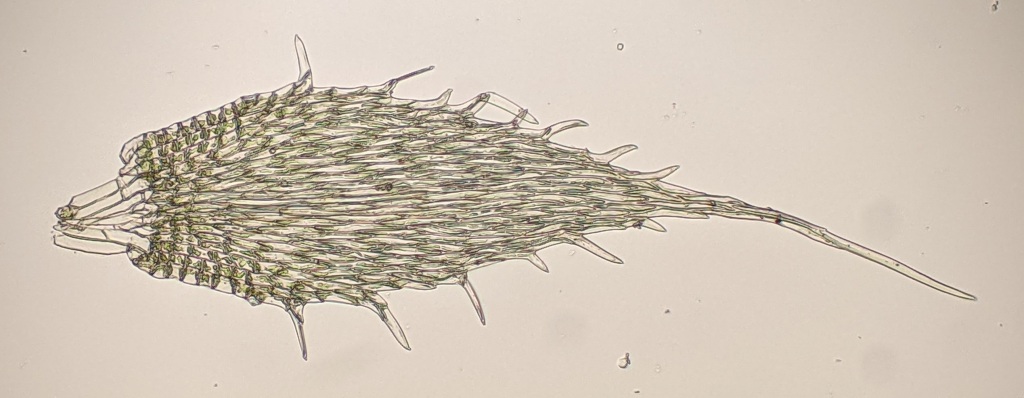Fabronia australis
Hook.Tufts on soil, rock or tree bases. Stems (5–) 10–15 mm long, simple or irregularly branched, with fascicles of rhizoids arising at leaf bases, brown, with a small central strand. Leaves ovate-lanceolate, lanceolate or rarely linear-lanceolate, (0.56–) 0.65–1.35 mm long, 0.18–0.33 mm wide, flat to slightly concave, weakly spr eading, secund when dry; costa weak or appearing absent, ending around mid-leaf; apex piliferous or acuminate; margins entire, denticulate, dentate or ciliate, plane, without a border; laminal cells elongate hexagonal or elongate rhomboidal, (32–) 48–90 (–125) μm long, 6–12 μm wide in mid-leaf, become smaller and grading into alar cells at base; alar cells quadrate or oblate, 10–25 μm long, 10–18 μm wide, extending from costa base to (7–) 10–15 cells up margin. Setae 2.5–6 mm long, stramineous or orange to reddish-brown, smooth. Capsules obovoid, ovoid or oblong, erect, 0.6–0.8 mm long. Operculum flat with a minute umbo, 0.1–0.15 mm long.
Wim, VVP, VRiv, GipP, WaP, Gold, CVU, GGr, DunT, NIS, EGL, EGU, HSF, HNF. Widespread throughout sclerophyll forests and woodlands, and rocky areas among grasslands except in the north-west and the wetter mountainous and southerly areas. Also WA, SA, QLD, NSW, ACT and Tas. New Zealand.
 Spinning
Spinning


